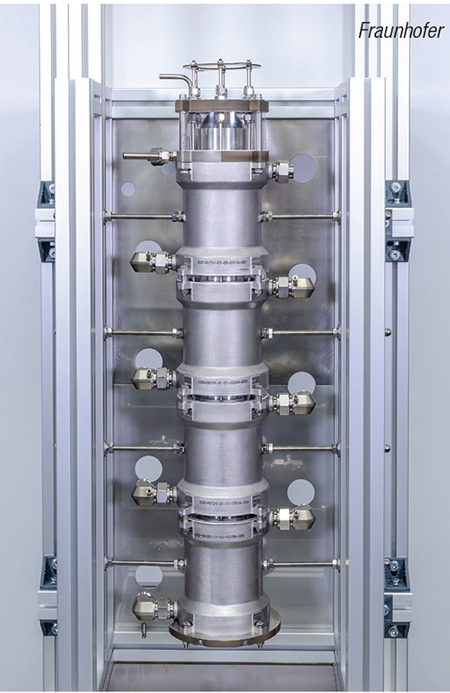Today, synthetic routes to about 10% of the top 50 active pharmaceutical ingredients (APIs) include one or more Grignard reactions, which are used to form C–C bonds. Normally, the reaction is performed batch-wise in continuous stirred-tank reactors (CSTRs), with Grignard reagent added in limited amounts to restrict the generation of heat. This practice leads to long reaction times and increased formation of byproducts.
 Now, researchers from the Fraunhofer Institute for Microengineering and Microsystems (IMM; Mainz, Germany; www.imm.fraunhofer.de) have eliminated these problems. “We’ve replaced the large CSTR with a flow reactor,” explains research fellow Gabriele Menges-Flanagan. “This means we can use the full power of the reaction and still control the temperature wonderfully,” she says. The advantages of switching from batch to a continuous process include a shorter reaction time (a few minutes), improved product purity and increased safety.
Now, researchers from the Fraunhofer Institute for Microengineering and Microsystems (IMM; Mainz, Germany; www.imm.fraunhofer.de) have eliminated these problems. “We’ve replaced the large CSTR with a flow reactor,” explains research fellow Gabriele Menges-Flanagan. “This means we can use the full power of the reaction and still control the temperature wonderfully,” she says. The advantages of switching from batch to a continuous process include a shorter reaction time (a few minutes), improved product purity and increased safety.
Inside the flow reactor, the reactant — usually an organic bromide or chloride — is pumped up through a bed of magnesium-metal shavings. An excess of Mg in the reactor ensures a fast activation of the reaction. The reactor is a double-walled cylinder cooled by a continuous flow of oil, which quickly and efficiently removes the heat to control the temperature. Because both reactant and product flow through the reactor with short residence times, side reactions are inhibited.
A pilot plant, consisting of four reactor modules in series (photo), can process up to 20 L/h of reactant solution. Initial feasibility studies have already been carried out with industrial partners. The reactor is not only suitable for forming any conceivable type of Grignard reagent, but may also prove suitable for the synthesis of organometallic compounds of zinc. Indeed, researchers have already conducted such reactions at the laboratory scale.